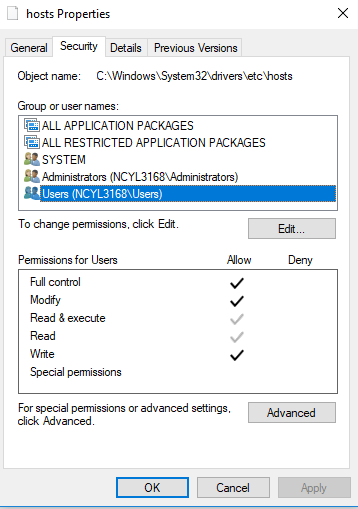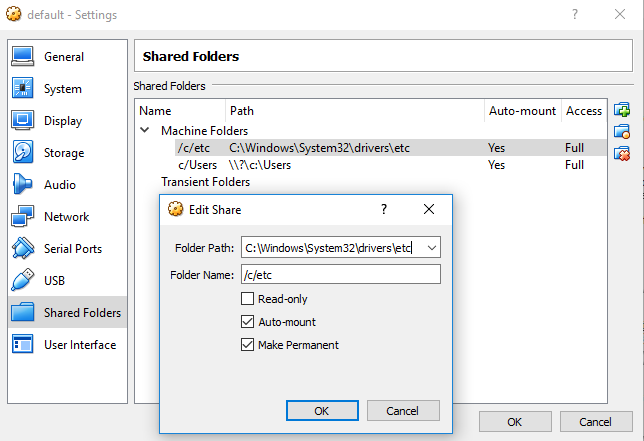Host entries generator, automatic network connection and web interface for Docker containers.
This Go program will listen for Docker events and fill the gaps of:
- Generating
/etc/hostsentries according to specific labels declared on Docker containers. - Generating a web interface to list web exposed containers in a nice grid.
- Auto connect network of web exposed containers to an external proxy.
See the web interface after having created the following containers.
docker run -d --name test1 \
--label ghosts.host="test1.local" \
nginx
docker run -d --name test2 \
--label ghosts.category="System" \
--label ghosts.host="test2.local" \
nginx
docker run -d --name test3 \
--label ghosts.host="test3.local" \
--label ghosts.name="Friendly app" \
nginx
docker run -d --name test4 \
--label ghosts.host="test4.local" \
--label ghosts.name="Jenkins" \
--label ghosts.logo="https://wiki.jenkins.io/download/attachments/2916393/logo.png" \
nginx
To start the server, use the following command.
docker run --rm --name ghosts -v /var/run/docker.sock:/var/run/docker.sock -v /etc/hosts:/app/hosts -p 8080:8080 lobre/ghosts
To let the container edit the C:\Windows\System32\drivers\etc\hosts, we need to update the permissions of the file to let the current user edit without Administrator rights.
Then, we also need to add the hostsforcewindowsstyle parameter of ghosts to be sure we use Windows style end-of-line characters.
docker run --rm --name ghosts -v /var/run/docker.sock:/var/run/docker.sock -v /c/etc/hosts:/app/hosts -p 8080:8080 lobre/ghosts -hostsforcewindowsstyle
By default, only C:\Users is shared to the VM. So the hosts file won't be available to Docker containers by default. We need to add a specific shared mount.
Ghosts has two different modes.
- Direct mode (default): containers are accessed using their direct IP.
- Proxy mode: containers are accessed through the IP of a predefined proxy (the proxy IP can be defined using the binary parameter
-proxyIP).
Usage of ./ghosts:
-addr string
Web app address and port (default ":8080")
-help string
Change the Web help link (default "https://github.com/lobre/ghosts/blob/master/README.md")
-hosts string
Custom location for hosts file
-hostsforcewindowsstyle
Force CRLF end of lines and one entry per line when generating hosts entries
-nohelp
Disable help on web interface
-nohosts
Don't generate hosts file
-noweb
Don't start web server
-proxycontainername string
Name of proxy container
-proxyip string
Specific proxy IP for hosts entries (default "127.0.0.1")
-proxymode
Enable proxy
-proxynetautoconnect
Enable automatic network connection between proxy and containers
-webnavbgcolor
Color of navbar on the web interface (default "#f1f1fc")
-webnavtextcolor
Color of the navbar text on the web interface (default "#50596c")
-nometrics
Set to true to disable Prometheus metrics at /metrics
ghosts.host: Comma separated list of hosts for container (e.g. mycontainer.local.com).ghosts.path: Comma separated list of paths for container (e.g. /my-path).ghosts.port: Override internal exposed port.ghosts.proto: "http" or "https" (default "http").ghosts.name: Define web name. Otherwise taken from the container name.ghosts.auth: Define if auth protected entry. If true, a lock will be displayed on the web interface.ghosts.category: Define a web category. Defaults to "Apps". Supports multiple values (comma separated list).ghosts.logo: Define a web logo. Defaults to a generated avatar with the initials of the entry name.ghosts.description: Add a web description that will appear as a tooltip.ghosts.noweb: Don't show on the web.ghosts.nohosts: Don't generate entry in hosts file.ghosts.nonetautoconnect: Don't connect to proxy network.ghosts.direct: Use direct container IP in hosts file even if in proxy mode.ghosts.webdirect: Use direct container IP directly in web view even if in proxy mode.
You can define multiple sets of urls/port using segments. They can be defined using the following labels structure.
ghosts.<my_segment_name>.hostghosts.<my_segment_name>.pathghosts.<my_segment_name>.portghosts.<my_segment_name>.proto
The name of the segment will be shown on the web interface. This feature can be useful if your container has multiple vhosts (e.g. frontend and backend).



